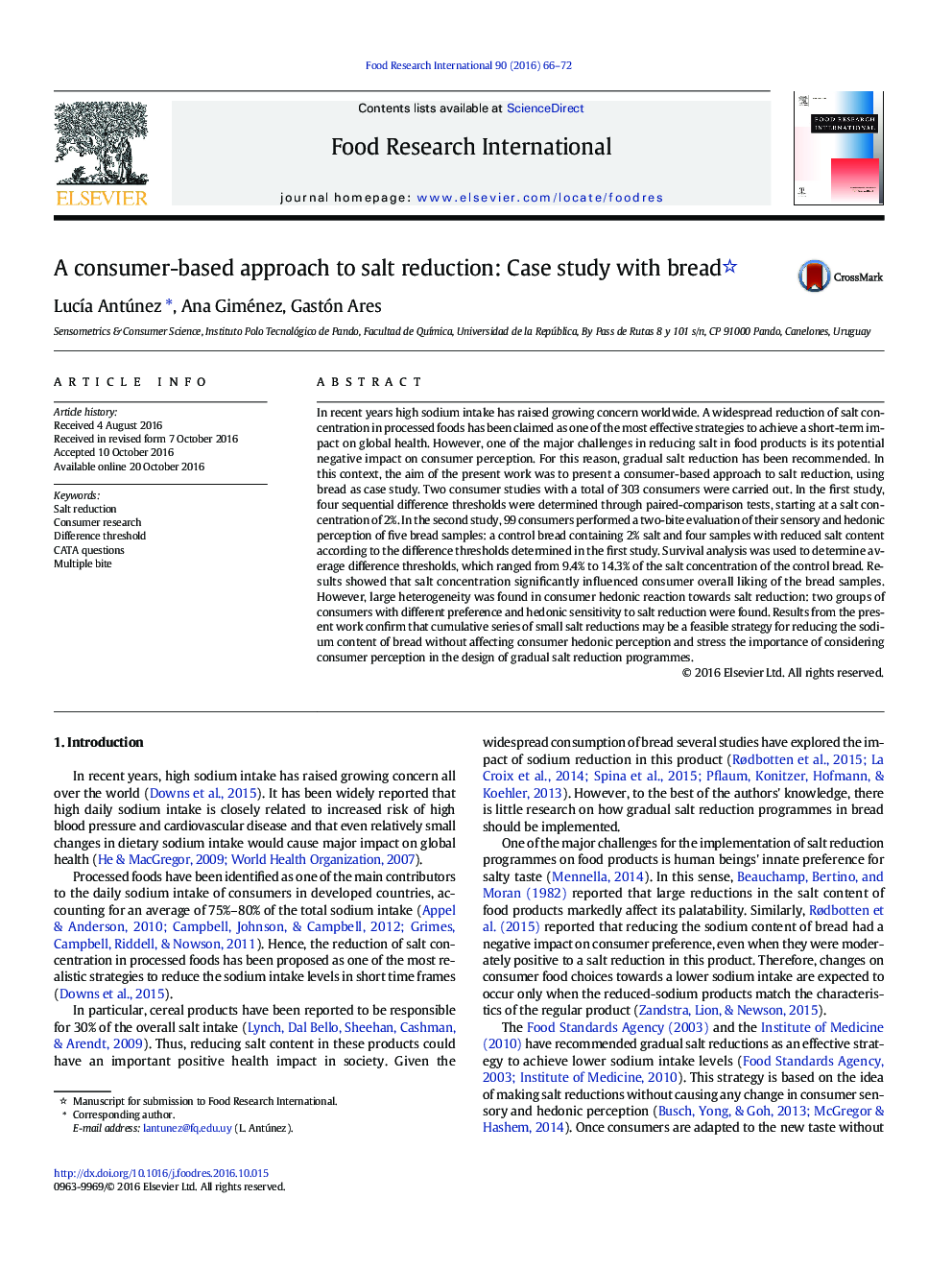| کد مقاله | کد نشریه | سال انتشار | مقاله انگلیسی | نسخه تمام متن |
|---|---|---|---|---|
| 4561016 | 1628460 | 2016 | 7 صفحه PDF | دانلود رایگان |

• A consumer-based approach for gradual salt reduction was presented.
• Four difference thresholds for salt in bread were determined based on consumer perception.
• Salt concentration significantly influenced consumer overall liking of the bread samples.
• Large heterogeneity was found in consumer hedonic reaction towards salt reduction.
• Gradual salt reductions could be a feasible strategy for reducing the sodium content of food products.
In recent years high sodium intake has raised growing concern worldwide. A widespread reduction of salt concentration in processed foods has been claimed as one of the most effective strategies to achieve a short-term impact on global health. However, one of the major challenges in reducing salt in food products is its potential negative impact on consumer perception. For this reason, gradual salt reduction has been recommended. In this context, the aim of the present work was to present a consumer-based approach to salt reduction, using bread as case study. Two consumer studies with a total of 303 consumers were carried out. In the first study, four sequential difference thresholds were determined through paired-comparison tests, starting at a salt concentration of 2%. In the second study, 99 consumers performed a two-bite evaluation of their sensory and hedonic perception of five bread samples: a control bread containing 2% salt and four samples with reduced salt content according to the difference thresholds determined in the first study. Survival analysis was used to determine average difference thresholds, which ranged from 9.4% to 14.3% of the salt concentration of the control bread. Results showed that salt concentration significantly influenced consumer overall liking of the bread samples. However, large heterogeneity was found in consumer hedonic reaction towards salt reduction: two groups of consumers with different preference and hedonic sensitivity to salt reduction were found. Results from the present work confirm that cumulative series of small salt reductions may be a feasible strategy for reducing the sodium content of bread without affecting consumer hedonic perception and stress the importance of considering consumer perception in the design of gradual salt reduction programmes.
Figure optionsDownload as PowerPoint slide
Journal: Food Research International - Volume 90, December 2016, Pages 66–72